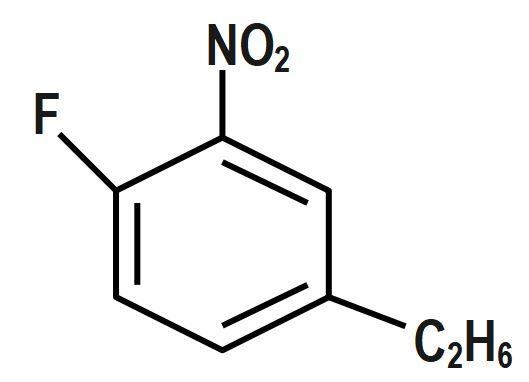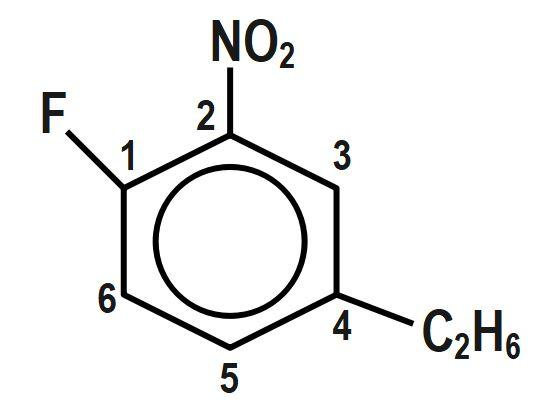
Compound is

(A)
(B)
(C)
(D)

Answer
464.1k+ views
Hint: We know that to answer this question, it is necessary that we should know about drawing structural formulas for organic compounds. We should know that each straight line segment represents a bond, the ends and intersections of the lines are carbon atoms, and the correct number of hydrogen is calculated from the tetra-valency of carbon. Non-bonding valence shell electrons are omitted in this formula
Complete answer:
To answer this question, we will draw the Kekulé Formula of the compounds that are presented in questions. We should know that a structural formula or Kekulé Formula displays the atoms of the molecule in the order they are bonded. It also tells us how the atoms are bonded to one another, for example single, double, and triple covalent bonds. Covalent bonds are shown using lines. The number of lines indicates whether the bond is a single, double, or triple covalent bond. Structural formulas are helpful because they explain the properties and structure of the compound which empirical and molecular formulas cannot always represent.
Naming a compound in organic is said to be nomenclature which we study in general organic chemistry. Identify the compound then look for the functional group. Identify if it has any double bonds or any triple bonds. Use the rules that are given to name a compound. In chemistry, nomenclature is assigned by the international union of pure and applied chemistry (IUPAC). This is published in the blue book of organic chemistry. For simple molecules we use more common names rather than the name provided by the IUPAC. We use certain prefixes, suffixes and infixes to describe the name of the compound. Let’s revisit all the rules in one or two lines. First we identify then we give highest precedence, then identify the functional group, put the prefix and suffix.
Here the given structure is of

Therefore, the correct answer is option B.
Note:
Remember that we should know other types of structures as well. We should know that we write condensed formulas to show the order of atoms like a structural formula but we write them in a single line to save space and make it more convenient and faster to write out. We sometimes experience that organic compounds can be complex at times, line-angle formulas are used to write carbon and hydrogen atoms.
Complete answer:
To answer this question, we will draw the Kekulé Formula of the compounds that are presented in questions. We should know that a structural formula or Kekulé Formula displays the atoms of the molecule in the order they are bonded. It also tells us how the atoms are bonded to one another, for example single, double, and triple covalent bonds. Covalent bonds are shown using lines. The number of lines indicates whether the bond is a single, double, or triple covalent bond. Structural formulas are helpful because they explain the properties and structure of the compound which empirical and molecular formulas cannot always represent.
Naming a compound in organic is said to be nomenclature which we study in general organic chemistry. Identify the compound then look for the functional group. Identify if it has any double bonds or any triple bonds. Use the rules that are given to name a compound. In chemistry, nomenclature is assigned by the international union of pure and applied chemistry (IUPAC). This is published in the blue book of organic chemistry. For simple molecules we use more common names rather than the name provided by the IUPAC. We use certain prefixes, suffixes and infixes to describe the name of the compound. Let’s revisit all the rules in one or two lines. First we identify then we give highest precedence, then identify the functional group, put the prefix and suffix.
Here the given structure is of

Therefore, the correct answer is option B.
Note:
Remember that we should know other types of structures as well. We should know that we write condensed formulas to show the order of atoms like a structural formula but we write them in a single line to save space and make it more convenient and faster to write out. We sometimes experience that organic compounds can be complex at times, line-angle formulas are used to write carbon and hydrogen atoms.
Recently Updated Pages
Master Class 11 Business Studies: Engaging Questions & Answers for Success

Master Class 11 Computer Science: Engaging Questions & Answers for Success

Master Class 11 Maths: Engaging Questions & Answers for Success

Master Class 11 Economics: Engaging Questions & Answers for Success

Master Class 11 Accountancy: Engaging Questions & Answers for Success

Master Class 11 English: Engaging Questions & Answers for Success

Trending doubts
1 ton equals to A 100 kg B 1000 kg C 10 kg D 10000 class 11 physics CBSE

Difference Between Prokaryotic Cells and Eukaryotic Cells

One Metric ton is equal to kg A 10000 B 1000 C 100 class 11 physics CBSE

Proton was discovered by A Thomson B Rutherford C Chadwick class 11 chemistry CBSE

Draw a diagram of nephron and explain its structur class 11 biology CBSE

How do you find the composite numbers from 1 to 50 class 11 maths CBSE




